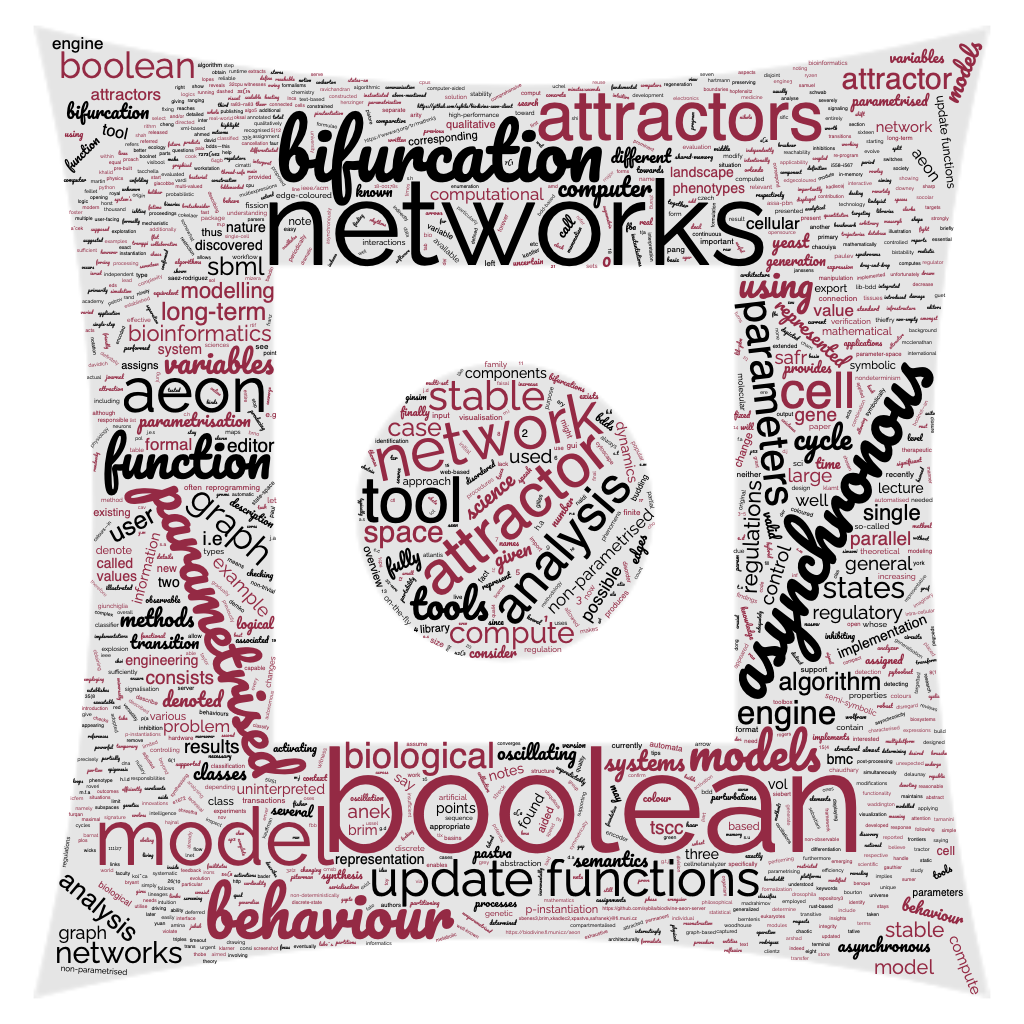PARAMETER SYNTHESIS FOR BIOCHEMICAL MODELS
Systems Biology models often have numerous parameters, such as kinetic constants, decay rates and drift/diffusion terms, which are unknown or only weakly constrained by existing experimental knowledge. A crucial problem for Systems Biology is that these parameters are often difficult to be measured directly. Furthermore, they may vary significantly according to in vivo context. As a result, computational methods for the estimation or synthesis of these parameters are of great interest.
The goal of our research is to develop effective, fast, and scalable methods, techniques and tools for automated parameter synthesis for the computational analysis of biological systems.
Discrete Bifurcation Analysis of Dynamical Systems
Bifurcation analysis is a central task of the analysis of parameterised
high-dimensional dynamical systems that undergo transitions as parameters are
changed. The classical numerical and analytical methods are typically limited
to a small number of system parameters.
The goal of our research is to develop a novel
approach to bifurcation analysis that is based on a suitable discrete
abstraction of the system and employs model checking for discovering critical
parameter values, referred to as bifurcation points, for which various kinds
of behaviour (equilibrium, cycling) appear or disappear.
Inference of Boolean Networks
The inference of Boolean models that explain the experimental data is an essential theme in systems biology. Our approach to Boolean network identification uses a description of some prior knowledge in a form of a Boolean network sketch as an input. The Boolean network sketch is a new concept that integrates partial knowledge about the topology of the network and partial understanding of the update logic and places some restrictions on the model dynamics.
The goal of our research is to develop algorithmic techniques to automatically infer large scale Boolean networks from experimental data and Boolean network sketches.
Digital Bifurcation Analysis of Reactive Systems
Reactive systems are those that react continuously to their environment. Reactive systems have real-time constraints, represented as parameters, and should be fault-tolerant or robust. The behaviour of a reactive system may change dramatically as a change in parameters passes a critical value (the system bifurcates). As a result the system might lose its robustness.
The goal of our research is to develop a fully automatic
approach to the robustness analysis of reactive systems based on our method of digital bifurcation analysis.
Partially Specified Boolean Networks: Analysis, Bifurcations, Robustness, and Control
Because there is a continuous lack of sufficiently detailed (mechanistic) information on biological processes, there is a need to work with models involving uncertain (or insufficient) knowledge. Partially specified Boolean networks (PSBNs) have partially defined update functions. Our research aims to develop a formally sound theory of PSBNs and propose algorithmic techniques for the analysis of attractors and their bifurcation, various types of control, and robustness analysis.
Comprehensive Modelling Platform
CMP is a general framework for public
sharing, annotation, and visualisation of domain-specific biological models. For a selected organism, the framework is instantiated as a
web-based application which allows capturing several aspects of biological
models represented as biochemical reaction networks or ordinary differential
equations. The key feature relies
on mapping kinetic models to a precise textual and a schematic graphical
representation of the related biological knowledge, thereby supporting the
systems biological view of the modelled organism. Besides model repository
and annotation, the platform includes basic model analysis procedures such as
simulation and static analysis.
Currently, two instances E-Photosynthesis [www.e-photosynthesis.org] and
E-Cyanobacterium [www.e-cyanobacterium.org] are under development.
